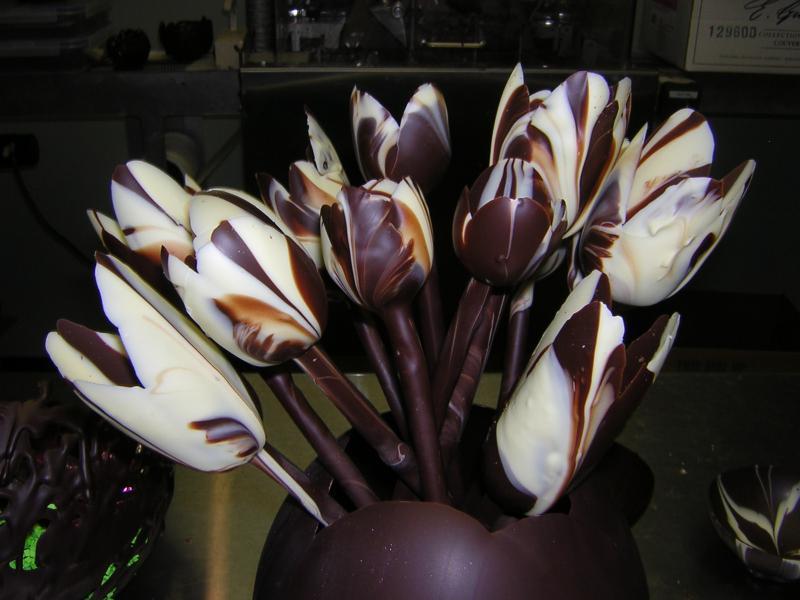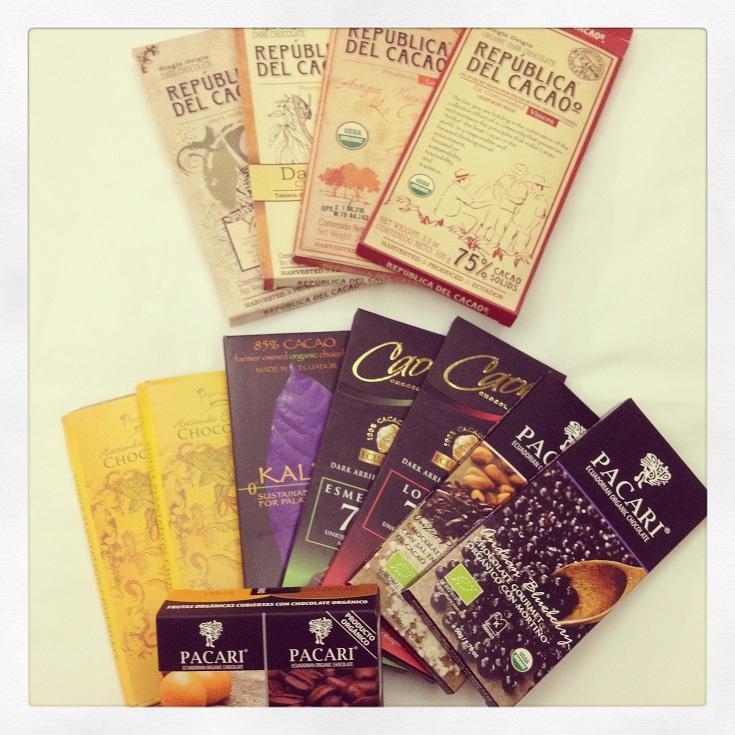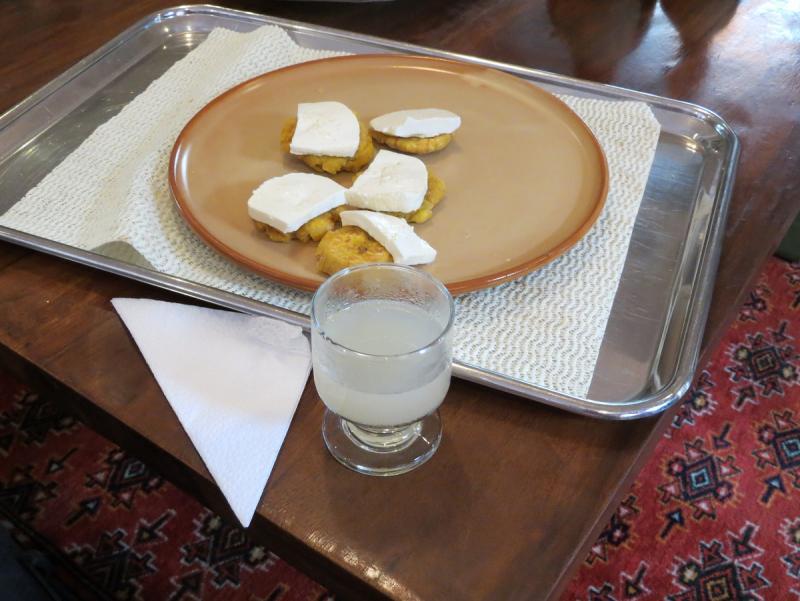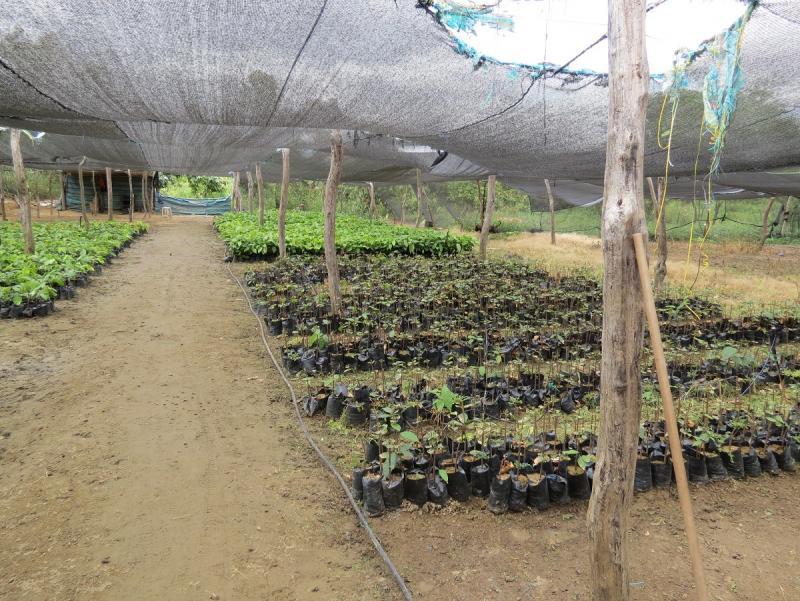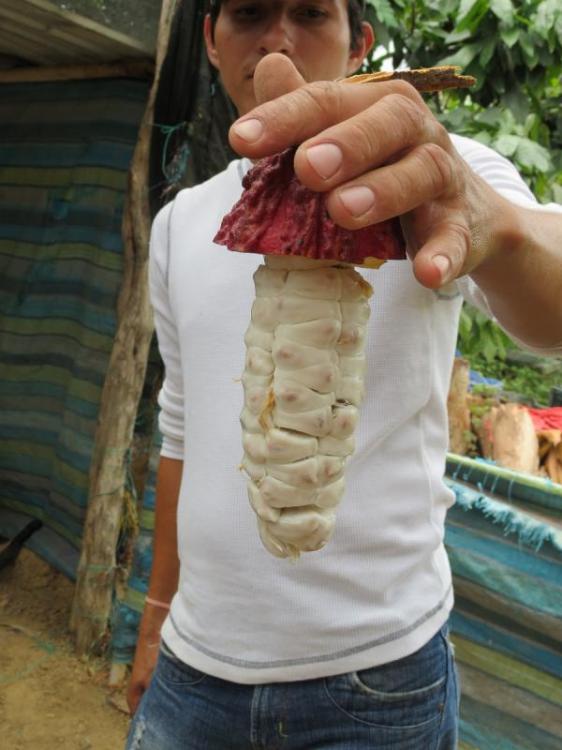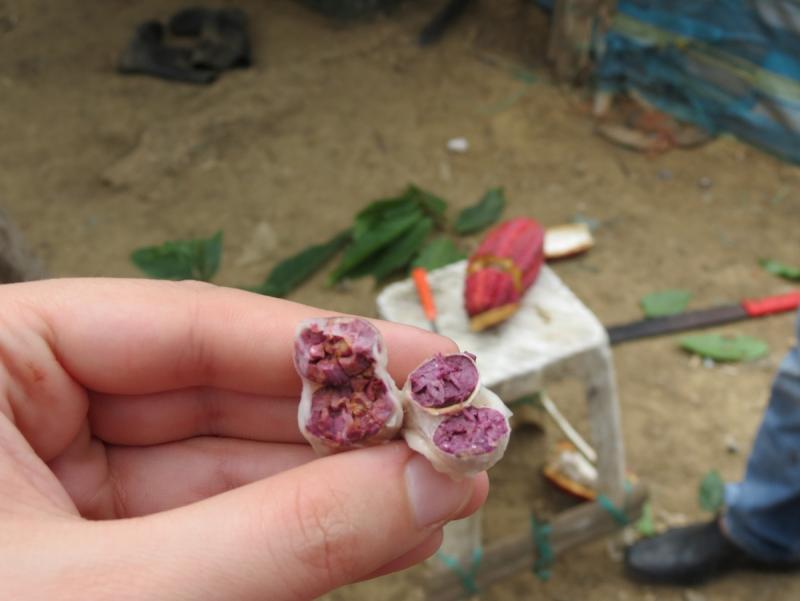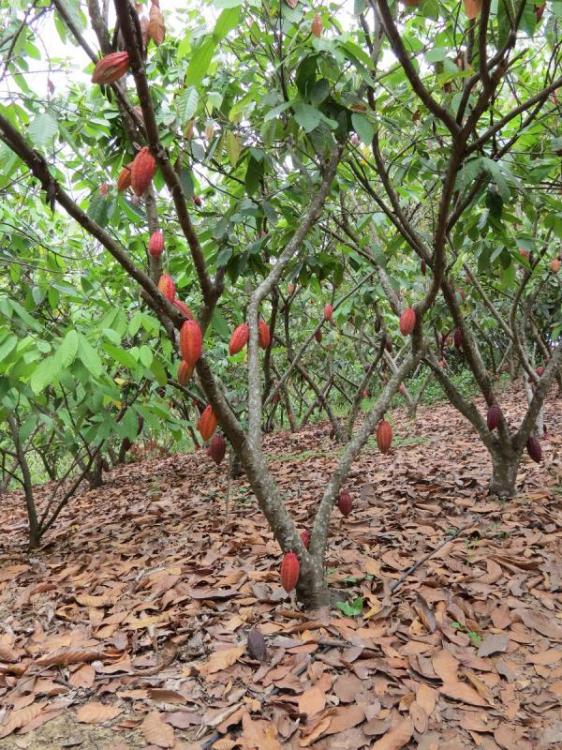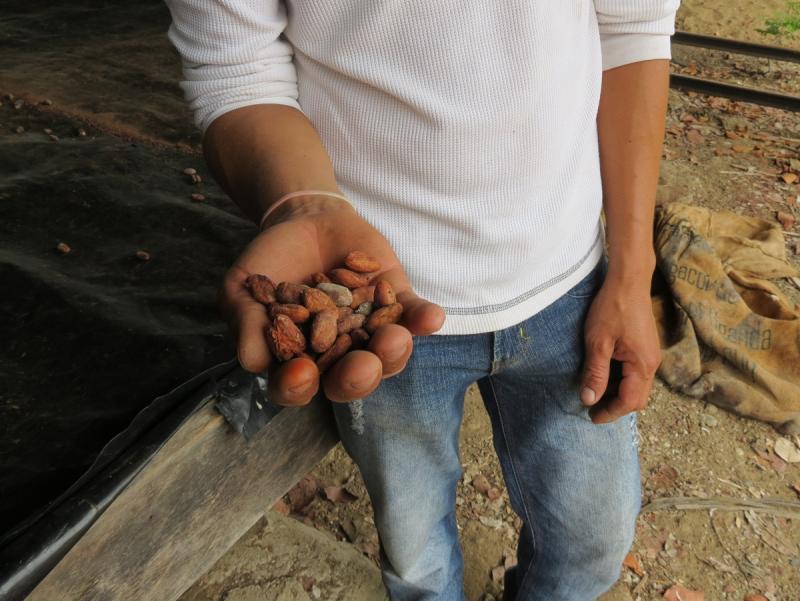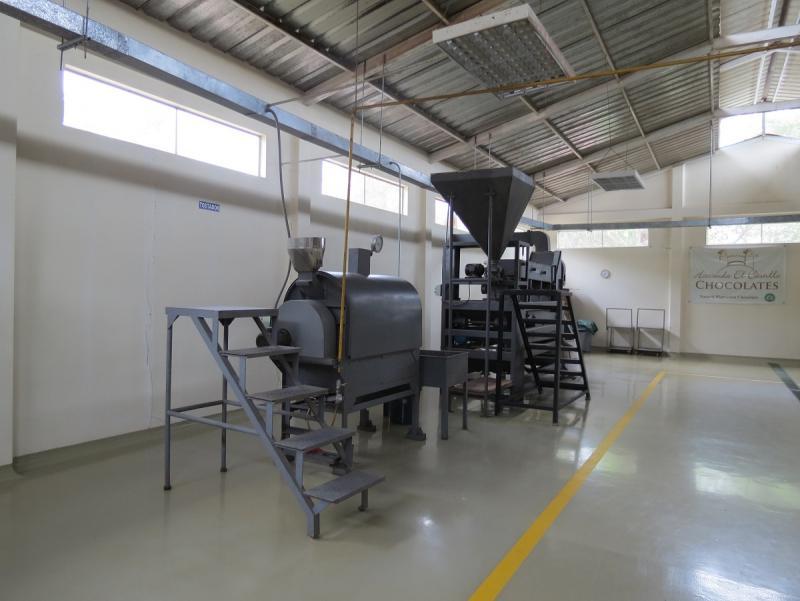Search the Community
Showing results for tags 'Chocolate'.
-
Hello everyone. I'm a newbie and am seeking your help about a particular brand of confectionery coating that I've discovered. I recently bought about 70lb of real chocolate very cheap and it is great but, I noticed that the company also sells a brand of confectionery coating called SEMPER. And what's more, the coating costs more than the real chocolate does. It is around $38 for an 11lb block whereas Callebaut is only $35 for 10lb. The SEMPER does not require tempering either. I would like to try it if it tastes good as it would avoid me the bother of tempering. But only if it is good. Anyone have any current or past experience with this brand? I'd appreciate any and all input.
-
Locally I can only find two drop Callebaut chocolate and it's just too think for my molds. I have three drop dark chcolate and that works fine, but both the milk chocolate and the white chocolate are two drop. Is there any sort of standard ratio that I can use to know how much cocoa butter I should add to get it thinned out a bit? I know I can add it to the tempering machine during the melt phase but I have absolutely no idea how much to add and would like a general starting point. Obviously once it's added I can check and see if it's thin enough but I don't want to add half an ounce and find out I should have started with four ounces or something. Also, is it unusual for places to only carry the two drop chocolate? Even online I've had trouble sourcing a three drop Callebaut for milk and white. And lastly, anyone have a good source for Callebaut chocolate? I'm in Florida, just north of Orlando and am currently getting my chocolate from Restaurant Depot in Orlando. I first orderd online from Qzina but then their prices jumped way up so I went this route, but they for milk and white they only carry the thick stuff. Thanks guys!!!
-
Has anyone tried any of the ganache recipes in William Curley's book Couture Chocolates? I tried to make the star anise ganache (p. 66) and it didn't solidify. The recipe says to slab the ganache and cut the next day. The problem was that the next day it was still much too soft to cut. It was more the consistency of a very (emphasis on very) soft ganache for a molded chocolate. The recipe uses a mix of bittersweet chocolate and gianduja for the chocolate component. I was suspicious of the recipe before I began because the ratio of the chocolate mix to cream is only about 1.25:1 which seemed too low to me for a slabbed ganache. Also the recipe calls for heating the chocolate to about 45C (113F) before emulsifying with the cream. Could this have contributed to the ganache not setting, at least in the 24 hour timeframe called for in the recipe? I usually use tempered chocolate to make ganaches. The instructions also have you use a chocolate/cocoa butter mix for the foot. As this mixture crystallized on the slab it cracked a lot and was very brittle. Meanwhile I scooped the ganache up and it's sitting in the refrigerator until I have time to make some molded chocolates. Should be a good filling for that! On the bright side, the flavor is quite nice.
-
-
I have a favorite chocolate glaze recipe that liquifies very quickly at around 70 degrees F. We have had some very bad layer cake disasters (top layer slides off) as a result. Can anyone suggest how I could change the recipe to make it more stable at higher temperatures but still keep the same overall taste profile? -- Mache Chocolate Glaze - Makes about 3 1/2 cups 1 1/2 cups granulated sugar 1 cup boiling water 1 cup unsweetened cocoa powder - Droste cocoa powder - Dutch processed with alkali 6 ounces semisweet chocolate, melted - Valrhona, Le Noir Amer 71% Cacao - Black package with red stripe 1 cup canola oil 3/4 cup butter (1 1/2 sticks), melted 1. Place sugar in large mixer bowl, add boiling water and whisk slowly until sugar dissolved. Add cocoa and mix well with a whisk. 2. Roughly chop the chocolate into squares/chunks and place in a bowl over a sauce pan of just simmering but not boiling water. Let chocolate melt. 3. Combine melted chocolate and oil; add to sugar and cocoa mixture, beating slowly with whisk until well mixed. Add butter and beat slowly with whisk until until butter is completely incorporated into glaze. 4. Cover and chill several hours, preferably overnight for best texture and flavor. Stir well before using. Makes enough to generously frost center, top and sides of two 9 inch layer cakes.
-
I'm looking for some help with a dessert I am planning to do in a couple of weeks time using David Everitt-Matthias' recipe for chocolate delice as a basis: http://www.lechampignonsauvage.co.uk/chocolate.html I've actually tried doing the dessert before but it didn't turn out right due to me screwing up the part where you whisk the oil into the egg yolks as if making a mayonnaise - I knew at the time it wasn't right but I'd used up my eggs and it was a bit late, and I ended up with a rather dense filling. This time I'm going to be more careful, but I was thinking of changing the filling to something like peanut butter and raspberry. Any thoughts on this? I was going to plate it with a raspberry gel and maybe some kind of chocolate crumbs, but I'm not sure about an ice cream which would work, possibly peanut butter but I don't want something to rich. I've no idea if the malted barley from the original recipe would work? One last thing, the recipe doesn't state what type of gelatin sheets to use - i.e. bronze/silver/gold strength. Should I stick to a medium strength to play it safe?
-
Has anyone tried this cocoa powder? My absolute favorite, El Rey, is suddenly impossible to find - Apparently, they're not producing it at the moment, and who knows if and when they will again. I've already tried most cocoa powders, including Pernigotti, Callebaut, Cacao Barry Extra Brute, Droste, Scharffen Berger, etc., etc., and nothing has ever come close to El Rey. I'm heartbroken.
-
WagJag has a promotion right now on Camino chocolate. It is advertised as Fair Trade Camino bittersweet chocolate chips containing 71% cocoa. The ingredients are cacao mass, cane sugar, and cacao butter. There are no additives or emulsifiers. The price is $95 for 10kilos. My question is, can I use this for anything other than, say, chocolate chip cookies? Can I use it for molding chocolates? Ganache? it is a great deal but on the other hand, that is a lot of chocolate. Thank you.
-
Ok, you all know that I'm no whiz at making sweets. So, of course, I decided to make my family a whole array of different treats and send them in the mail for Christmas. Most have turned out ok, but I have a big failure and I don't want to waste it. I tried to make fudge using white chocolate chips, sweetened condensed milk and Bailey's Irish Cream. It seemed dang simple, but I must have done something wrong because it won't set up. It's the texture of a soft caramel. Ideas on ways to use it? I'm not asking to save the fudge because I think that's impossible, but could I turn it into something else? It tastes really good.
-
Re-reading the recent topic on chocolate temperers here got me wondering about making my own. The temperature control part shouldn't be too bad - either a Ranco device or an external sous vide controller type thing (the fancier ones I could program to run warming/cooling cycles) would seem to do the trick. Both would require a probe to be stuck in the chocolate. I figured I could heat it either by hot plate or light bulbs and cool it just with a fan and the heat shut off. Where I was hitting a wall, however, was what to use for a holding apparatus. Ideally it will be something with a stirrer, so I was thinking of a food processor type thing, but all the cheap ones have the two beaters for mixing, which wouldn't scrape the walls. I also thought of perhaps just using my Kitchenaid and cutting some of the supports out of one of the beaters/scrapers so my probe could sit in there, and then surrounding the bowl with a couple light bulbs. But does anyone else have other great ideas? Something where there's a flat-bottomed bowl that I could add a heat source to? It may be a futile project, but I thought it might be a nice thought experiment, as well as a way to potentially save several hundred dollars. Thanks!
-
Hi all, I was wondering if anyone has tried these with chocolate? http://www.amazon.co.uk/Veined-Cutters-Plungers-Sugarcraft-byFlissyTM/dp/B004S2PNQ2/ref=sr_1_7?ie=UTF8&qid=1320095390&sr=8-7 If so, how did you use them? I imagine spreading a thin layer of chocolate on cellophane, waiting for it to cool a bit and pressing these into it? Would it work you think?
-
Hello dears, anybody participated or organized chocolate degustation / workshop / ceremony? We are invited to organize the degustation for 200+ people next Thursday and it got me thinking about creating the event with nice context. We are thinking to do chocolate pairings with alco / cheese. We are also thinking about making aztec or french style hot chocolate w/without spices as well as chocolate fountain. It would be perfect to involve the people into this ceremony but how to make it properly and without big mess all around the table? Any good tips / ideas on chocolate workshops? Truffle making? Dragee making? What to avoid? Any ideas welcome. Biggest thanks in advance!
-
My chocolate tart dough always seems dry. I like the cocoa flavor and it performs well and holds its shape well, but it's missing something in texture. It is a somewhat soft and sticky dough. Should I use more butter? Melted dark chocolate instead of cocoa powder? Hydrate the cocoa in hot water? Use only egg yolks? What do you think? 1 lb butter 9 oz powdered sugar 2 tsp vanilla 3 lg eggs 22 oz AP flour 3-3/4 oz cocoa salt Thanks!
-
Coconut is one of my favorite flavors with dark chocolate. I've been working on a coconut truffle filling for molded pieces that is coming along, but I'd also like to create a more shelf-stable filling for a chocolate bar, like a coconut gianduja or a coconut version of a peanut butter cup. I've been making Greweling's PB cup recipe, and I'm thinking something like toasted shredded coconut and possibly powdered coconut milk with coconut oil in place of the PB, plus the cocoa butter to firm it up. Anyone tried anything like this? I would do the bars in 60% or 70%, should I be concerned about fat migration with the coconut oil and dark chocolate? I would want these to have a shelf life of 2-3 months. Thanks for any ideas! Andrea
-
I have been using some recipes in Ewald Notter's book and have come across a puzzle. In two recipes (key lime pralines, page 178, and mint pralines, page 186) he uses what he calls a "cracker," more like a cookie, made of chocolate and feuilletine, which eventually becomes the base of the praline. This part of both recipes calls for chocolate, cocoa butter, feuilletine (or corn flakes as a substitute), and butter. But he never mentions adding the butter. Instead he calls for adding the cocoa butter twice. I would assume the second mention is meant to be the butter, but at that point in the recipe he specifically says "Add the liquid cocoa butter..." after he has called for adding it previously. Has anyone tried either of these recipes or have a suggestion as to what was intended? Any help would be appreciated.
-
Ewald Notter calls for using tempered chocolate in his butter ganache recipes. Peter Greweling calls for using it not only in butter ganache but also in all slabbed ganache. Today I made Greweling's "Raspberry Bites" (a butter ganache recipe). I dutifully tempered milk and dark chocolate to make the ganache. But when I added the chocolates to the butter (all more or less at the prescribed temperatures), the mixture developed small lumps. I went ahead and added the raspberry brandy, and it got worse. Thankfully I had my immersion blender and beat the mixture over warm water until the lumps melted. There appeared to be no harm done from heat or blender; I had no other idea of what to do. I am wondering if the tempered chocolate is really necessary. I understand from Greweling's book that the difference is one of improved texture, but I could put up with a less-than-perfect texture rather than lumps in the ganache. Any ideas would be appreciated.
-
I just completed my first effort (aside from truffles) at dipping ganache in chocolate (Andrew Shotts's Coffee-Hazelnut). Fairly successful, tastes great, but the hazelnut praline paste (homemade, as he suggests, but you can't really get it smooth at home) made cutting neat squares difficult, so some of the finished product is a little rough (can we say "homemade-looking"?). Another issue in cutting was that for the bottom I used untempered (as many people recommend) milk chocolate (I heated it to around 104 F. and then used it), but it still became quite firm and did not cut cleanly. But my question is what to do with the chocolate used for dipping? Ordinarily I let such chocolate harden and reuse it another time, but there are decidedly bits of praline in this. I wouldn't bother asking, but I had to use a sizable amount of chocolate to get the pool deep enough for dipping, so what would you do with the leftover? Just turn it into filling for another batch of chocolates? I'm assuming it should not be used for future dipping, except perhaps for the same recipe. Thanks for any advice.
-
So, half a decade or so after everyone got sick of spherification I decided to start doing it. I needed to bring something to an erotic dessert party, and thought chocolate truffles that explode in the mouth would be the ticket. It worked pretty well. People loved them, and made incredible faces, wondering about what was going on in there. One friend said they were like "yolks of the ganache vulture" ... a name that has stuck. Unfortunately, making them was a gross process. My assumption that a mellon baller would work for scooping the cold ganache into the alginate was thwarted by their crumbly texture. I ended up forming the balls by hand, which left me looking like I was covered in poop. Here's the recipe (it's for reverse spherification): 175g heavy cream 30g liqueur 15g sugar 3.2g calcium chloride 100g dark chocolate, chopped The chocolate is chilled in the freezer before making balls, and then soaked in hot water to melt the centers before serving. Two thoughts I had are substituting invert syrup for the sugar, and adding gelatin (enough to give them better adhesion while cold, but not so much as to thicken them noticeably while melted). Any better ideas?
-
Visit to Cocoa Plantation in Ecuador On my recent trip to Galapagos Islands in Ecuador, we stayed for a day in Guayaquil, in order to tour a cocoa plantation and small factory- "Hacienda El Castillo". They manufactur the chocolate- from the cocoa trees to bar, solely in this plantation. We started in the main house, where we drank some cocoa juice, made from the pulp surrounding the cocoa beans- very sweet, but delicious: We saw cocoa trees in various stages of growth. In Ecuador, the cocoa variety that is grown is called "Arriba"/"Nacional". Since this pure variety doesn't produce many pods, they use a clone "CCN51"- a hybrid of trinitario and Nacional Inside of a cocoa pod: Fresh beans from 2 pods- 1 pure nacional (the darker), and one CCN51 cocoa tree Sun Dried and fermented beans: They mostly dry their beans in the sun, but if it is rainy, they have a gas heater to dry them. They claim there is no impact on the final flavor of the chocolate (I don't know how true that is), but there was a very heavy gas smell The small factory and their website: http://www.haciendaelcastillo.ec/home.php They produce 50%, 70% and 100% chocolate in the factory. After tasting the finished chocolates, we were a bit disappointed- the 50% was very very sweet, the 70% was just an average chocolate, not very special, and in my opinion not very good (The 2 left bars in the picture below). I bought a bar to bring to the conference in April, to hear some other people's opinion. Eventually, we went to a supermarket and bought some chocolates, that are produced in Ecuador, from cocoa grown in Ecuador: What really stood out (in price as well- ~$8-9 per bar), was the Republica del cacoa chocolate. They use only the pure nacional type, and not the clone. They had bars from severel areas in Ecuador which were incredible, and my favorite was a dark-milk chocolate- 65% milk chocolate- where you could taste the high quality dark chocolate, with some milk creaminess.
-
In his introduction to butter ganache in Chocolates and Confections (1st ed.), Peter Greweling says clearly that there must be 2.5 times as much white or milk chocolate as liquefiers in the formula. Yet in all his recipes that use white or milk chocolate, the amount of chocolate is nowhere near 2.5 times the amount of liquefiers (flavorings + butter). In the strawberry balsamic, e.g., the liquefiers add up to 340 g, so the amount of chocolate should be 850 g, yet he calls for 360 g of chocolate. And these recipes I am speaking of are for slabbed ganache, not piped. so they are not meant to be especially soft. I had a problem when I tried to make one of the ganaches (it never really hardened), and given his 2.5 rule, I am no longer surprised. Am I missing something, or is there some problem with the recipes? Any insights would be appreciated.
-
Just joined the community and have to say that it has been wonderful reading so many interesting and educational topics specificallly for sugar confections and chocolate, and during the past few days have read more than 8 hours a day (almost like a full time job) and haven't been able to finish, hopefully will accomplish this task someday. However have not found an answer to a project that I'm venturing into. Have a customer that wants filled molded chocolate with red wine, white wine and champagne. The problem part and cannot figure out is how to close the mold once I fill it with the wine, since the chocolate will be denser and tend to displace the liquid(wine) from the cavity. Was planning to use a hydrocolloid to thicken the wine and have a higher density (making the wine into kind of a jelly or perhaps some caviar spheres, like the molecular gastronomy) since I dont want to add nothing to the wine itself and leave it the most natural as possible, the wines are of different varities such as merlot, cabernet, etc. Any suggestions will be greatly appreciated Thanks
-
I have been reading postings on fruit compounds and powders for use in getting more intense flavors in ganaches (to be used for chocolates, specifically in cream centers) and have a few questions: FRUIT COMPOUNDS A number of posters do not like compounds, saying they contain artificial flavorings. I looked at the Amoretti site, and their ingredients (insofar as I could find them) seem to be natural. All opinions of Amoretti products on eGullet appeared to be very positive. I also saw good things about MEC3 products, which appear in Gustosia compounds, available at Qzina for fairly moderate prices--as these things go--but I couldn't find any ingredient lists. Albert Uster sells compounds (a kilo of raspberry is $77), but ingredient information is not provided. Pastry Chef Central carries Dreidoppel (which has received one less-than-stellar review on this site). Most posts on these subjects, however, are rather old. So my questions on compounds are: 1. Are Amoretti and Gustosia products still rated high by eG members? The Albert Uster compounds? Any others you would recommend--or not recommend? 2. I could not tell from the Amoretti site whether they sell directly to (small) consumers. Does anybody know that? And, assuming they do: Since there are no prices on their site, approximately how much does a 1-kilo container of fruit compound cost? FRUIT POWDERS Some chocolatiers like fruit powders (freeze-dried) to flavor fillings (for one thing, they do not add any liquid), and here there appear to be many sources. Van Drunen Farms looks promising for these products, but they state online that they do not sell directly to individual consumers. L'Epicerie and Chef Rubber carry fruit powders as well. So my questions on powders: 3. Do these powders have an authentic fruit flavor? 4. What sources for them do you recommend? Many thanks for any help in my continuing quest ("obsession" is such an ugly word) to obtain a real punch of fruit taste in cream fillings for chocolates. I am seeking to avoid use of much fondant as I think it gives a "flat" taste to things, much like making buttercream frosting with confectioner's sugar, and it dulls the taste of fruit.
-
Hi everyone, Melbourne (AUS) is having a bit of a warm spell at the moment that's looking to continue - 30+ celcius for about 2 weeks straight. I want to play around with a bit of chocolate making but it seems... foolish! In the mornings, the ambient temperature in my house is maybe 23, and i'm wondering if this would be ok for dipping (perhaps a quick trip to the fridge to help them set up for a few minutes?). With moulded pralines, it seems the brief fridge steps that some people recommend make sense since the whole tray is done at once, but it seems impractical for hand dipping, since i'd have to either wait till a whole tray was done (and perhaps moot the point) or otherwise do tiny batches! I guess a related question is that if i made a ganache to slab, would it even set up properly overnight? I was thinking that the crystals would still form as it cooled, but I don't know. Any tips for working in warmer weather (where climate control isn't possible)? Am I best to just write it off over summer and pick it back up when things cool down a bit? The one positive I can think of is that it'll take longer for my tempered chocolate to cool down, so less reheating! Cheers, Stuart.
- 22 replies
-
- Confections
- Dessert
-
(and 1 more)
Tagged with:
-
I have seen Nakazawa (available in the U.S. from Unger Co. in Cleveland) mentioned as a good source for boxes for chocolates, and they certainly have some very nice looking ones. Unfortunately 200 appears to be the smallest lot in which these are sold, and I am looking for smaller amounts of various sizes. Can anyone suggest other sources?
-
I am a novice when it comes to molding chocolate. I posted this question on Cake Central and no one could help me with an answer. It was suggested I try this site. I'm sure this is a dumb question, but I have to ask. Is there any way to re-shine chocolate that has dulled after being removed from a mold? I recently made some chocolates that needed a little bit of cleaning up around the edges. I was holding the chocolate, wearing cotton gloves, and when I was done the chocolate had a matte finish like I had touched them with my bare hands. Is there any way to re-shine them or is it a lost cause and I should start over? Thanks!!





